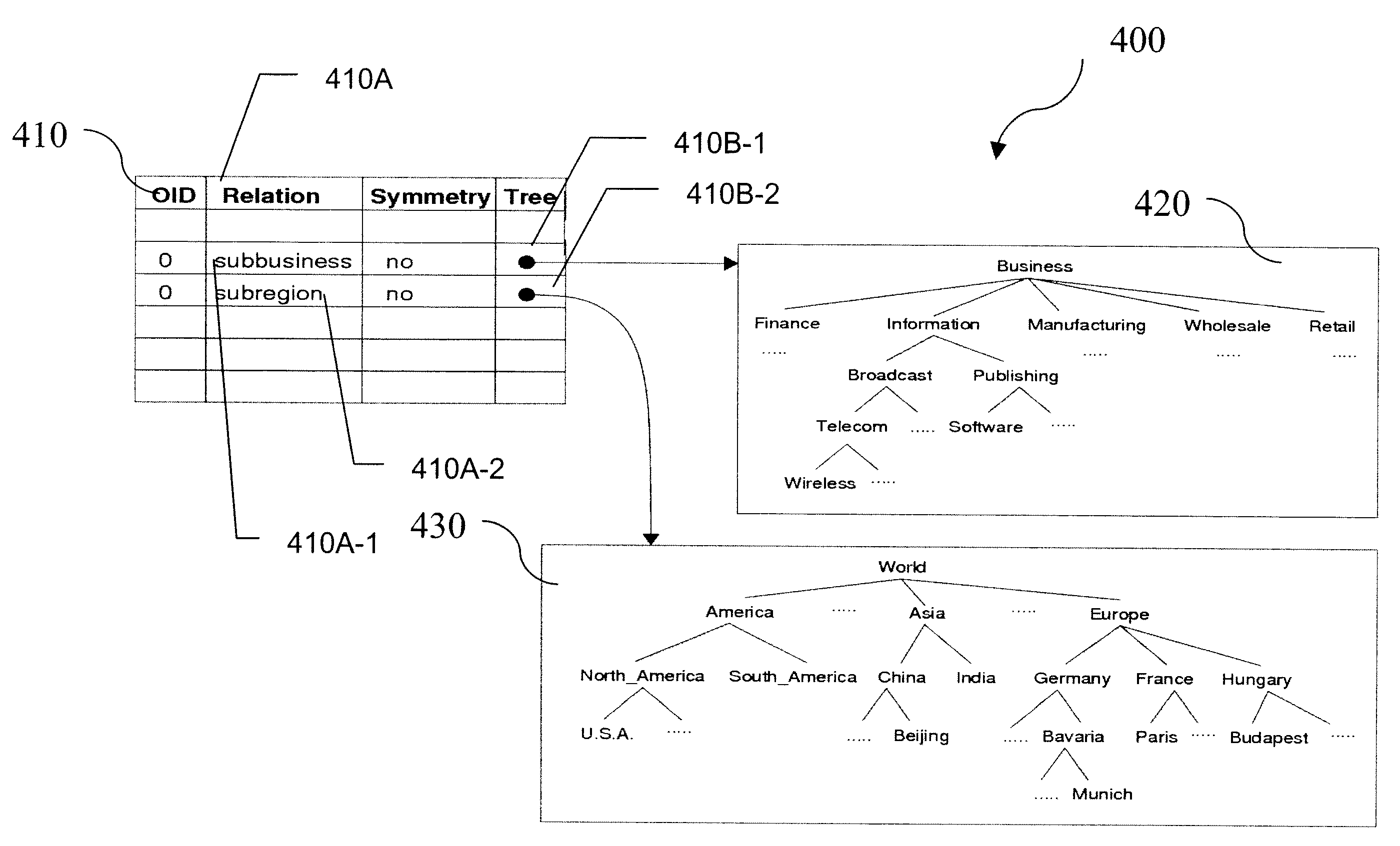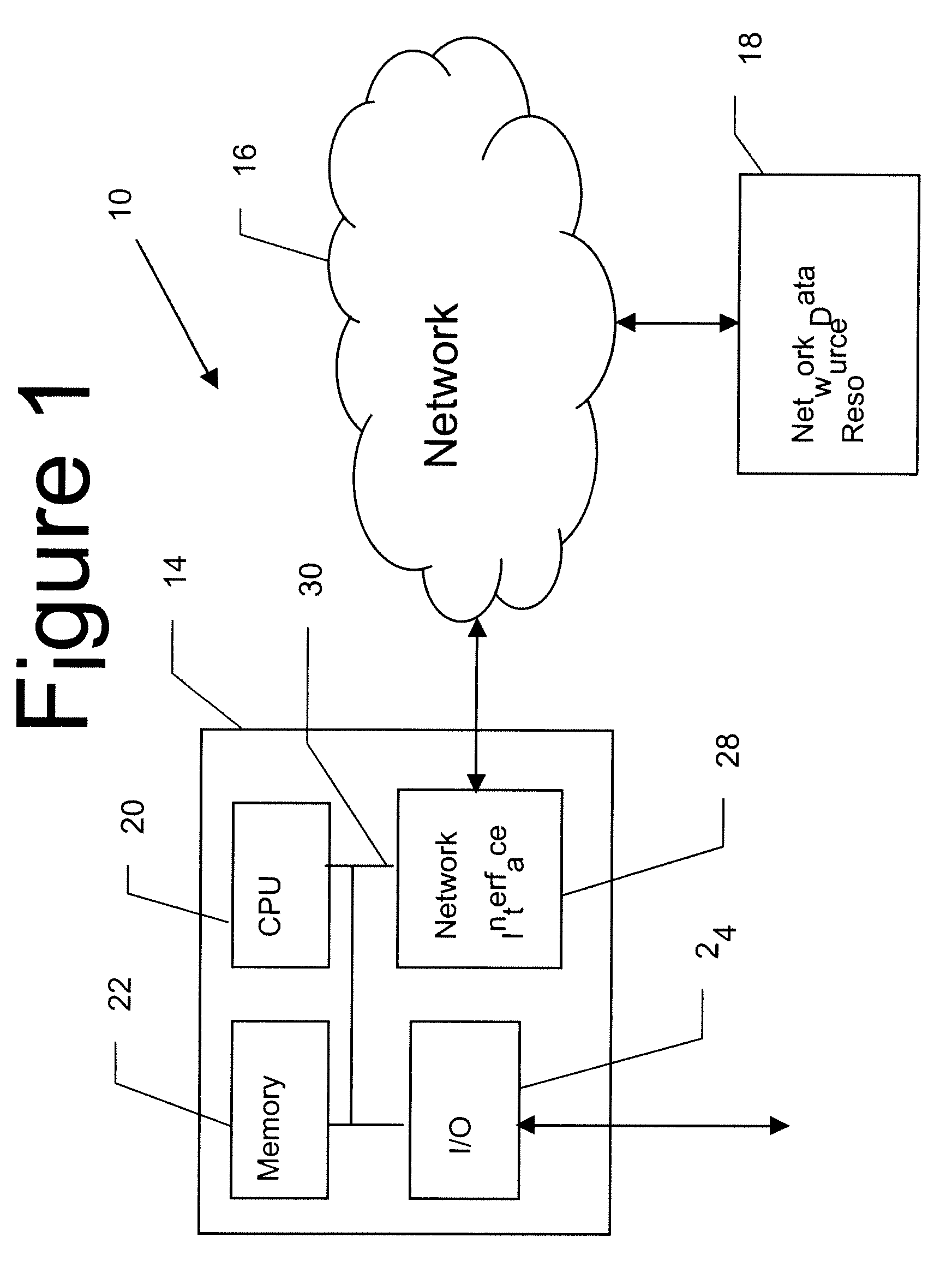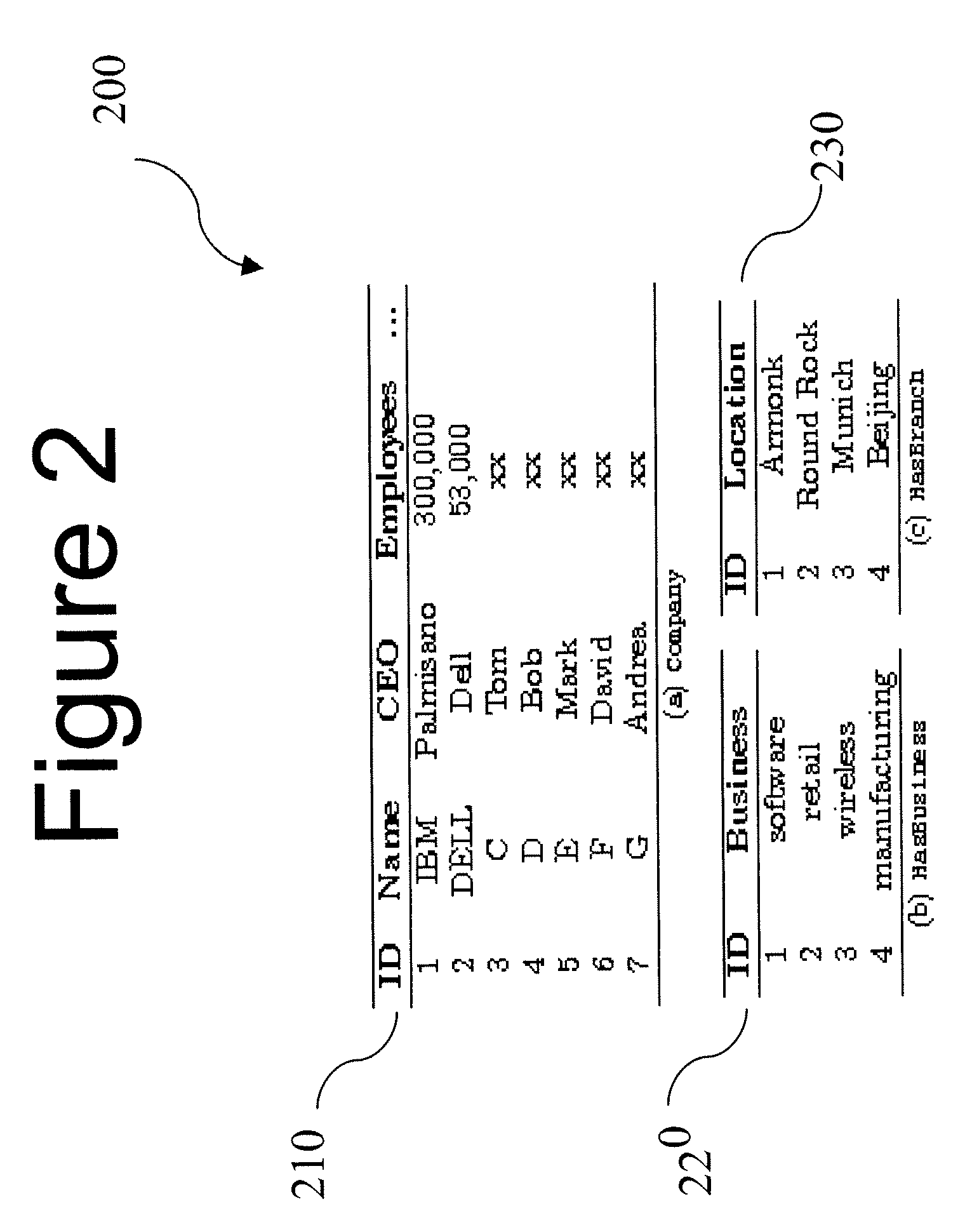Method For Supporting Ontology-Related Semantic Queries in DBMSs with XML Support
a semantic query and dbmss technology, applied in the field of data and query processing, can solve the problems of user failure to search the database for the desired information, substantial gap between the semantic or domain knowledge that describes the data stored in a dbms and the data itself, and substantial gap
- Summary
- Abstract
- Description
- Claims
- Application Information
AI Technical Summary
Benefits of technology
Problems solved by technology
Method used
Image
Examples
Embodiment Construction
[0025]The detailed description of specific examples of embodiments, and is in reference to example drawings that illustrate and describe examples in a detail enabling persons of ordinary skill in the arts to practice the invention. The specific examples are presented for illustration, and are not limiting.
[0026]As will be understood by persons skilled in the art upon reading this description, certain well-known techniques and methods are omitted, or are not described in detail, to avoid obscuring the novel features and aspects of the present invention.
[0027]The terminology used herein is not limiting and, instead, is only for purposes of ease of reference.
[0028]The functions and operations shown or described as separate blocks are generally shown or described as separate to clearly illustrate features and functions and are not, unless otherwise specified or clear from the context, necessarily performed at separate times, or on separate computational units.
[0029]The examples herein a...
PUM
 Login to View More
Login to View More Abstract
Description
Claims
Application Information
 Login to View More
Login to View More - R&D
- Intellectual Property
- Life Sciences
- Materials
- Tech Scout
- Unparalleled Data Quality
- Higher Quality Content
- 60% Fewer Hallucinations
Browse by: Latest US Patents, China's latest patents, Technical Efficacy Thesaurus, Application Domain, Technology Topic, Popular Technical Reports.
© 2025 PatSnap. All rights reserved.Legal|Privacy policy|Modern Slavery Act Transparency Statement|Sitemap|About US| Contact US: help@patsnap.com



